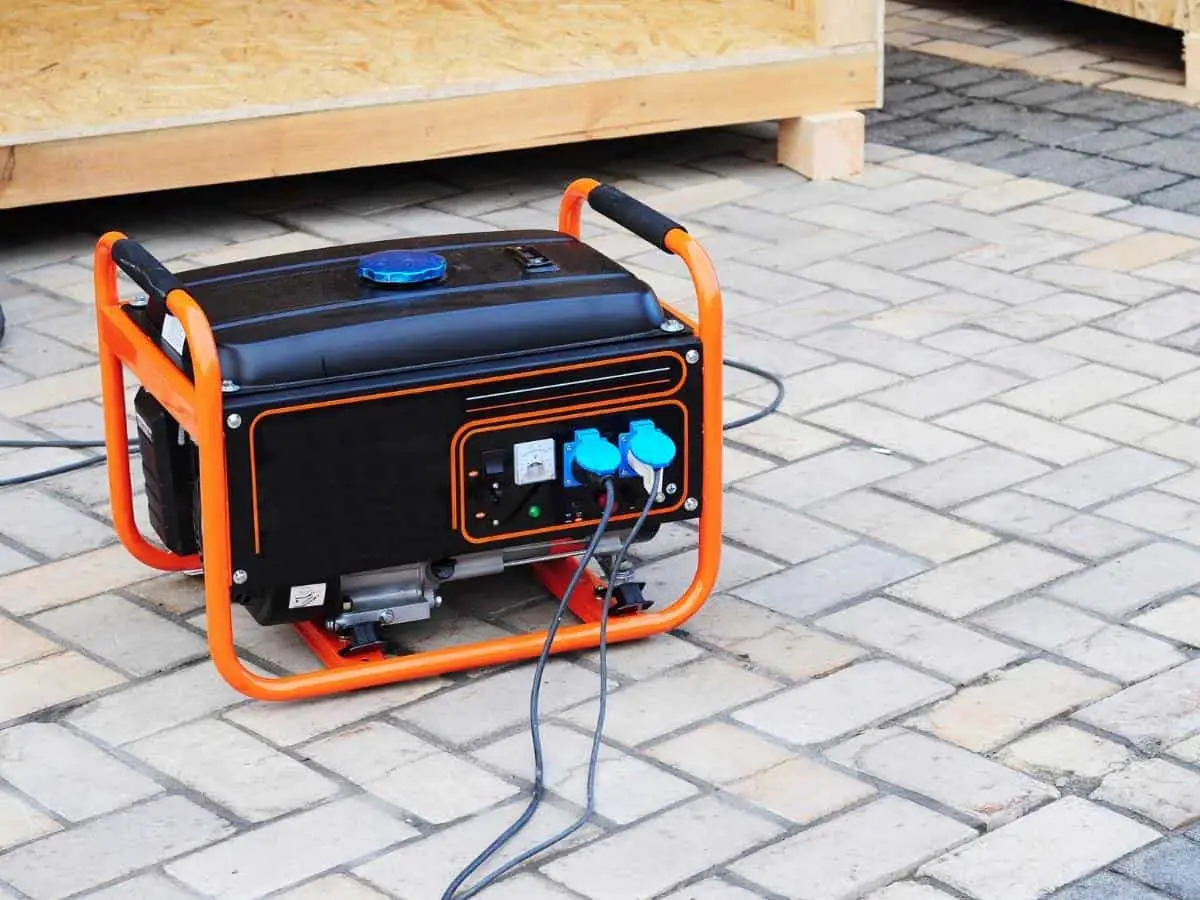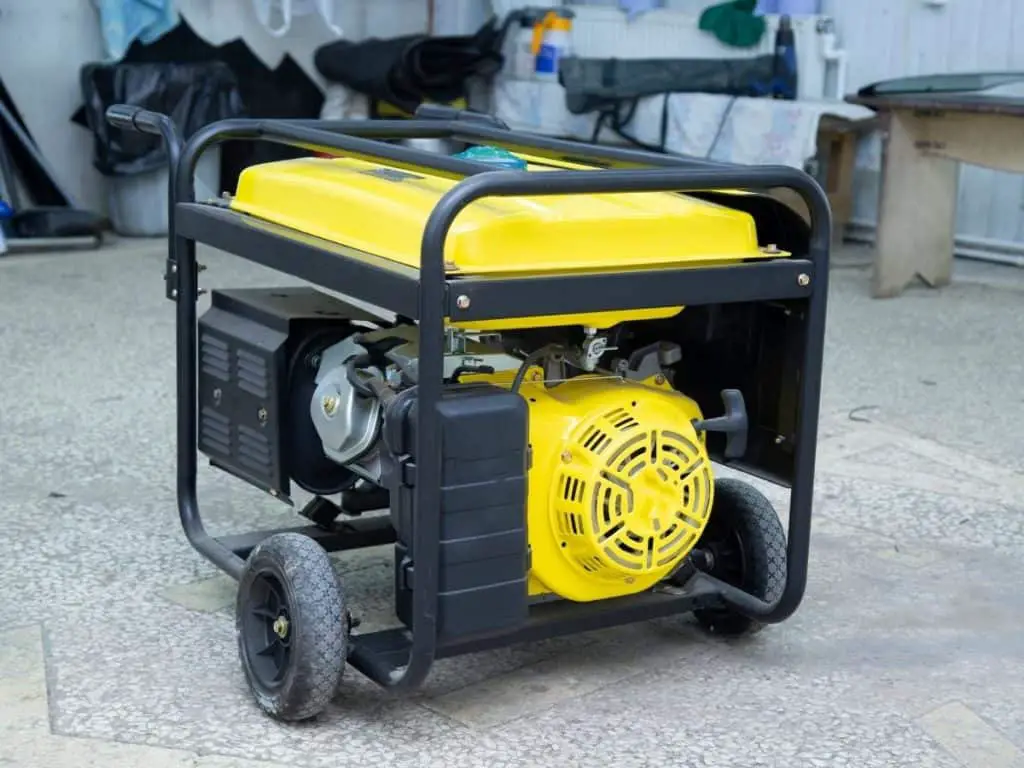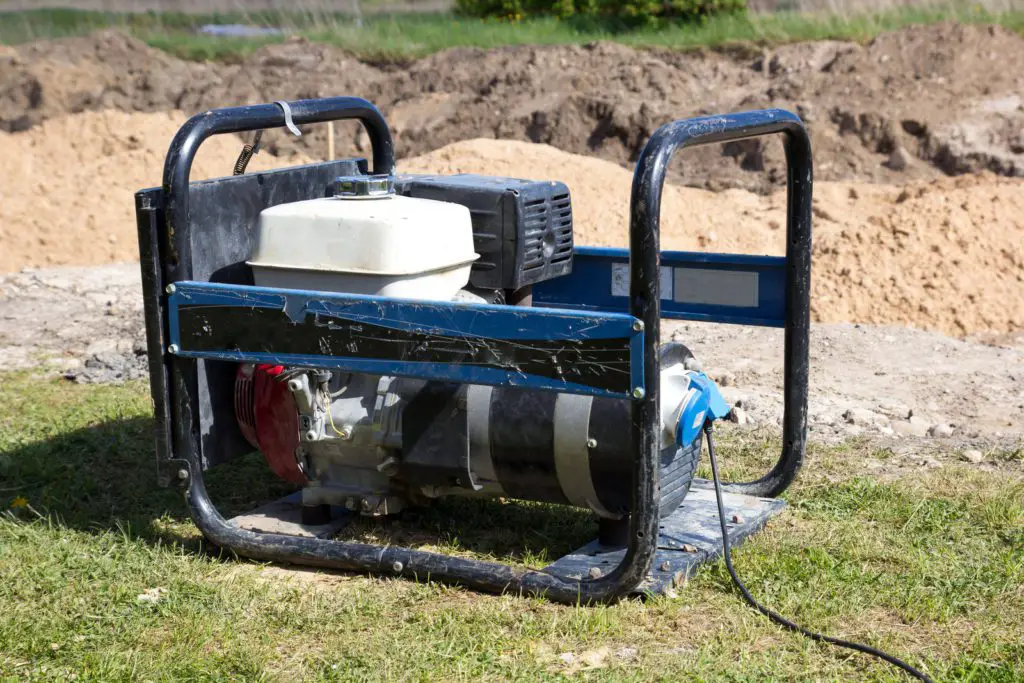The choke is a feature that controls the airflow for your generator. You can close it to provide more fuel to the engine, which you would typically do to start your generator in cold temperatures.
However, there are cases where your generator will only run on choke. If you can’t get your generator to stay on without restricting the airflow, there is an issue you need to fix.
Why does a generator only run on choke? There is usually an issue that restricts fuel intake. It can be stale fuel that clogs the system, a bad carburetor, or a vacuum leak in the engine.
We’ll go over these common issues and discuss other topics, such as:
- Is it bad to run a generator on choke?
- What causes issues with the choke lever, and how to fix these issues?
- How to fix common choke problems for different generator brands.
Read on to learn more about running your generator on choke and how to address this issue.

Is It Bad to Run a Generator on Choke?
When you close the choke lever, you restrict the airflow that goes into the carburetor. It results in a rich fuel mixture that your engine needs to start in cold temperatures.
If you have to run your generator with the choke level closed at all times, you’ll burn more fuel. It will also put more wear and tear on the engine and reduce the generator’s lifespan.
Why Does a Generator Shut Off When the Choke Is Off?
If your generator shuts off when you open the choke lever, fuel intake is probably an issue. There are different possible causes:
- Debris could clog the carburetor, the fuel pump, or another section of the fuel line.
- Stale fuel can evaporate and cause residues that restrict fuel intake.
- A dirty or clogged carburetor might not be getting enough fuel.
One of the first things you can try to address these problems is to use a spray cleaner to break down fuel residues and debris that can build up.

What Causes a Generator to Only Run on Choke?
If you can’t get your generator to stay on unless you reduce the air intake, there are different common issues you should troubleshoot:
- Fuel typically stays good for three to six months. If you stored your generator with some old fuel, it probably evaporated and clogged the fuel intake system. You can use a cleaning spray to get rid of the residues. It’s an issue you can easily prevent by not storing your generator with fuel in it.
- The carburetor relies on a main jet and pilot jet to inject fuel. These two jets look like fine needles, and they can become clogged. You can unclog them by removing the carburetor and letting it soak in a degreaser.
- The purpose of the carburetor is to regulate the airflow and adjust the fuel mixture ratio. The ratio can be off if the carburetor becomes loose or damaged. The carburetor gaskets can also cause a leak. You can fix some carburetor issues by cleaning this part, but you might need a new carburetor.
- The intake valve is another possible culprit for a generator that only runs on a choke. This part regulates the fuel flow into the engine, and it can cause a vacuum leak if it becomes cracked. Inspect this valve and replace it if needed.
What Are Some Common Generator Choke Problems?
In most cases, the problem will not come from the choke lever itself but rather from the engine, carburetor, or fuel line.
However, it’s possible to run into a stuck choke lever. You can usually solve this problem by adding a lubricant, but you might have to replace the choke lever.
Adjust a Choke Lever on a Generator
Operating the choke lever is easy. You must close the lever to reduce air intake when the generator starts. You can open the lever to let in more air and adjust the fuel mixture once the motor runs.
Fix a Generator that Only Runs on Choke
You can pinpoint the root cause of the issue by following a few simple steps:
- Disconnect the fuel line from the carburetor and start the engine. If the fuel pump works properly, you’ll see fuel come out of this line.
- Reconnect the fuel line to the carburetor and disconnect the intake valve from the engine. Start the engine. If fuel comes out of the intake line, you can rule out issues with the carburetor.
- If the fuel pump and carburetor work properly, you’re probably dealing with a vacuum leak in the engine itself.
If you’re unsure where the issue is coming from, your first step should be to use a cleaner to eliminate residues and debris inside the fuel intake system. Removing the carburetor and letting it soak in a degreasing solution can also solve many problems.
Adjust the Air-Fuel Mixture Screws
The air-fuel mixture screws determine how much air the carburetor introduces into the fuel mixture. If the screws are loose and letting in too much air, your generator might need the choke lever to remain closed to compensate.
You can adjust these screws easily:
- Warm up the engine.
- Find the air-fuel mixture screws on the side of your carburetor.
- Turn them clockwise to reduce the air intake.
- Turn them counterclockwise to let more air in.

Why A Generator Is Not Stay Running
The fuel mixture might not be rich enough to keep the engine running, usually due to an issue with the carburetor or fuel intake. However, there can be other causes for a generator that doesn’t stay on:
- Overloading is a common issue. Your generator will automatically shut off if you plug too many appliances in. Try reducing the load to see if it fixes the problem.
- The spark plugs ignite the air/fuel mix for combustion. They can become dirty or damaged and prevent your engine from burning fuel properly. Clean or replace them to fix this problem.
- Most generators will automatically shut off If the oil level gets too low. The engine needs oil to run smoothly, and this auto-shutoff feature prevents unnecessary wear and tear.
- A dirty or clogged air filter can reduce airflow and cause the engine to overheat and shut down.
Why Does My Two-Stroke Engine Only Run on Choke?
Generators come with four or two-stroke engines. A two-stroke engine will complete a power cycle with two-piston strokes, making the engine more efficient and boosting its HP rating.
All the abovementioned issues can apply to two, and four-stroke engines since the fuel intake system are similar. However, a two-stroke engine is more likely to overheat if it’s not getting the right fuel mixture.
References:




